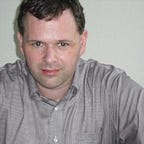MCU and the Art of the Change-Up
By working together, Marvel and Sony have successfully resuscitated the stalled Spider-Man movie franchise with Homecoming.
Spider-Man: Homecoming illustrates a key driver of the success of the Marvel Cinematic Universe, of which Spider-Man is now a part. Charges of plot formulas and underwhelming villains have varying degrees of validity, but one thing that the MCU gets right across the board is how cannily it shifts genre mash-ups from film to film. The different franchises within the MCU skillfully meld the superhero film to other cinematic styles, providing viewers with spectacles that transcend whatever limitations of movie formula one might detect.
Iron Man is a sleek, high tech, modern action series. Thor is a mythology-steeped adventure. Hulk was a science-driven monster movie. The first Captain America was an old school war movie, while its sequels embraced the art of the paranoid conspiracy thriller. Guardians of the Galaxy is a wide-eyed, unabashedly fun space romp. Ant-Man played as a straight-up heist comedy. And Doctor Strange gave viewers a trippy supernatural kaleidoscope.
With Homecoming, the MCU brings fans the superhero movie as a Young Adult drama, anchored by Tom Holland’s ingratiating central performance as Peter Parker/Spider-Man. All the elements are there. A “geeky” protagonist who could qualify as a geek only in a Hollywood production. A diverse array of outsiders and cool kids who are never quite as far apart as either group might like to think. An understanding parental figure (Marisa Tomei, turning the Aunt May archetype on its head). Fumbling stabs at romance, complicated by family conflict and a variety of misunderstandings. All kinds of alienation, strivings to fit in, grow up and find out who you’re going to become.
These well-known teen drama elements are assayed fairly skillfully, with a bright, diverse cast that keeps the action flowing smoothly. And in between, Peter puts on a colorful red-and-blue outfit with a mask and has fights with a gang pushing weapons made from purloined alien tech, led by an inspired re-casting of classic villain the Vulture (a convincing turn from one-time screen Batman Michael Keaton).
That grounds Homecoming firmly in the MCU (as do supporting turns from Robert Downey, Jr. as Tony Stark/Iron Man and Jon Favreau as Tony’s sidekick Happy Hogan and a couple of amusing cameos from Chris Evans as Captain America).
By melding each individual franchise within the MCU to different genre conventions, Marvel gives fans something different. So that even when the plot unfolds according to the “Marvel Formula,” the movies feel fresh and involving.
It’s an approach that comes right from Stan Lee’s Marvel playbook from the ’60s. Fantastic Four was a science-drive adventure soap opera. Amazing Spider-Man sketched a drama about a teen loser trying to turn things around. Iron Man provided a Cold War action spectacle. Thor was all about gods and monsters. Uncanny X-Men worked a subtle counter-culture parable. Captain America was a pure spy adventure.
That many of those original conceptions have stuck with the various franchises as they’ve traveled from the realm of comic books to adaptations in other mediums isn’t an accident. Marvel’s history is steeped in melding superhero conventions to genre tropes. The MCU continues that tradition proudly and successfully.
It makes fans eager to see what Marvel has in store for Black Panther and Captain Marvel. And what other genres they might tap in the future.
